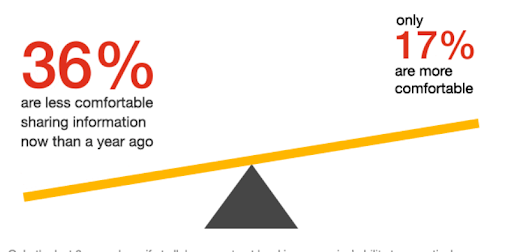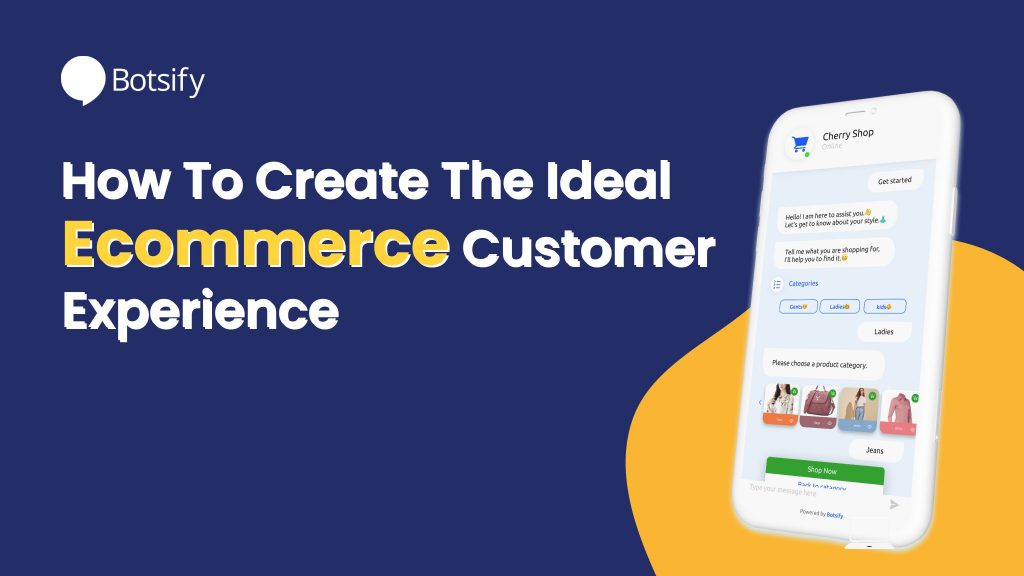In an increasingly digital world, ecommerce is becoming more and more valuable for businesses, B2C and B2B alike. This is why keeping great customer experience will boost your e-commerce industry
A spike in online shopping caused by 2020’s lockdowns means that consumer spending in the US jumped by 44% last year alone. Fuelled though it was by the pandemic, ecommerce has been on the rise for years. In fact, 2020’s $861 billion in online sales came only a little early: sales had been predicted to hit these figures by 2022.
Even more crucially, consumers’ expectations are on the rise as well – and have been long before the pandemic hit. A study by PwC showed that:
- 43% are willing to pay extra for convenience
- 42% would pay more for a more welcoming overall experience
- 65% think a positive customer experience is a more powerful factor in whether they would use the brand again than great advertising
The ecommerce customer experience starts the moment a customer becomes aware of your brand, and continues long after they make that first purchase. Customer retention is a key part of a great experience strategy!

So, we know the importance of a great ecommerce customer experience – but how should you go about creating and implementing this?
Take Advantage of Technology
It should be noted that both platforms can be configured so that they are accessible to users with disabilities. With Wix, for example, you’ll need to integrate with a 3rd-party web accessibility plugin to create a fully accessible Wix site.
In fact, one of the hard truths about sleek new technology is that consumers will rarely even notice it is there – until it goes wrong. Instead, customers are focused on the ease of using sites, and each time the customer experience a higher standard, their expectations rise for all other brands.
Sometimes this experience comes in the form of the snazziest new technology: VR in ecommerce is taking off, for example. But oftentimes, consumers are looking for a human connection – even if that connection is facilitated by technology.
Customers who believe that your brand offers the best customer experience are likely to remain loyal as well as recommend you to their friends.
One easy way to improve the customer experience is with the use of chatbots. Chatbots use AI to provide consumers with real-time answers to their queries. No need to wait for business hours, and it’s more easily accessible than trawling through FAQs!
Personalization
There are many different ways that your eCommerce can be improved through personalization. Analyzing previous eCommerce marketing strategy examples is a great way of furthering customer engagement through proven practices. By tailoring the shopping experience to individual preferences and behavior, an ecommerce storefront can enhance customer experience, and satisfaction and drive repeat purchases.
For example, promoting and leveraging user-generated content is good to help create a feeling of inclusion for those customers. It’s cost-effective because it doesn’t cost your business any money to make it. Most of the time, you can get this content with the promise of credit to the individual, which for some is enough. In this case, you can also use Shopify Themes to give your eCommerce store personality and image.
Thinking locally is also important—your eCommerce may be targeting certain geographic areas in question. As your platform grows, you can tailor your product pages to these places so that it’s relatable content for those who are from there. This can be done by assessing your business data and utilizing SEO practices to target your audience correctly.
Smart Search
Talking of tech, one of the most important features of any site is the humble search bar – so make sure yours is working for you!
Think about a time when you were searching for something specific – and were instead presented with a baffling array of irrelevant results. ‘Silver 13” laptop’, for example, will often bring up results for silver laptop speakers, headphones, keyboards.

The idea behind smart searching is that it brings some humanity back into ecommerce. Remember we mentioned earlier that consumers are looking for a human connection, even online?
Rather than battling with a machine, smart searching enables customers to feel as if they’re talking to a human representative. It works by taking the phrase typed in context, and working out what the searcher is actually looking for, rather than relying on keywords.
The above search, for example, is likely to yield better sales conversion rates if it produces results relating to actual laptops. Whether that’s 13” laptops in a different color or silver laptops in similar sizes is up to you.
Either way, the customer isn’t left feeling frustrated and as if the company doesn’t understand their needs.
Convenience
Convenience is one of the driving factors for ecommerce. Why trek to the shops when you can have something delivered almost instantly? It’s that almost-instant delivery that has made Amazon a household name: Prime has made next-day or even same-day delivery the standard.
Smaller businesses don’t necessarily have to compete with that speed, though. They just need to remember that convenience is key to a great ecommerce customer experience and work out how to make a users’ visit seamless.
Consider how many users visit the same site across multiple devices. If you ensure that a user’s cart is synched across multiple platforms, you’re much more likely to get a sale, even hours later. It’s much more convenient than if a customer has to re-find and reconsider all potential purchases! To provide positive customer experience companies that provide shipping services should prioritize convenience for their buyers.
Similarly, reminder messages help to bring the potential purchase back to the forefront of the customer’s mind. An automated text message or quick email to let them know you’re holding the item in their cart for a specific time period can create a sense of urgency. You could make use of cart abandonment software and send out a discount if someone is on the fence about a purchase.

Keeping your audience and their needs in mind is as critical as convenience itself, which takes us neatly onto our next point – feedback.
Friendly Feedback
One cornerstone in any customer experience policy has to be feedback. This can come in many forms. You could opt for surveys on which emails your customers prefer because you’re trying to develop the best email marketing campaigns for your audience. Maybe you use social channels to get feedback on the brand’s tone of voice. You could even host an onsite pop-up asking what your customers would like to see in the future.
If you feel like you’re struggling compared with competitors, focus on finding out why customers choose you, and what they think you’re missing. For instance, if you provide alternatives to Outlook, it can be worth asking if there’s any features Outlook has that you don’t. Feedback isn’t just about improving yourself in relation to your past, but also in relation to the wider market.
It helps to be transparent – let your customers know that you’re implementing changes based on previous feedback. This way, they’ll know that you’re open to suggestions, and feel more comfortable coming forwards with ideas.
Data Privacy & Transparency
With business’ reliance on technology only increasing, it is of paramount importance that consumers trust the businesses that they are dealing with.
However, whilst businesses themselves think that their practices in areas like data protection are getting more secure, consumers don’t seem to believe them. In fact, in PwC’s 2020 survey, 36% of people said that they were less comfortable handing over data than they had been two years previously.

Everyday transparency should include having a clear, easy-to-read (and find!) data policy, detailing how the company uses customer information.
This also extends to operations issues like shipping delays. Consumers are more forgiving when you let them know there’s an issue, and keep them informed about how and when it will be resolved.
Earlier, we mentioned the importance of creating a human connection with your customers: transparency can help with that. Letting people know that there are real people behind the scenes, ones who understand their concerns, is a great way to get customers to trust your company.
It can be as easy as sharing why the founder started the company, or some silly photos of employees packaging up products.
Transparency should extend to all mishaps, no matter how severe. To consumers, data and security breaches appear almost inevitable. 60% of those surveyed expect companies they interact with to experience some form of data breach. 34% say they have already experienced one.
What seems to matter most, though, is how companies deal with these breaches: it’s all about transparency and communication.
If you do suffer a data breach, your best bet is to inform your customers as soon as you know it has happened. Spell out exactly how it might affect them, and if they should take any further measures. As the situation unfolds, keep customers updated on what is happening throughout the process, and how you are addressing it. Additionally, including clear and concise details about how you will use customers’ data, will not only showcase ethical data handling but also ensure compliance with data subject access requests.
The message here is clear: security is important, but it’s how brands react that truly sticks in customers’ minds.

The Ideal Ecommerce Customer Experience
A good ecommerce customer experience should be ever-changing, and it’s certainly worth keeping an eye on new customer experience trends that pop up.
Consumers are focused, now more than ever, on brands that can deliver what they need with efficiency and convenience. Concentrate on the customer journey from start to finish, taking into account things like your first contact resolution rate and where site traffic is coming from.
A high resolution rate increases customer satisfaction, while traffic could be a good indication of where to concentrate your marketing efforts.
Overall though, the takeaway seems to be that customer experience are after a personal, human experience. They want the convenience of online shopping to be combined with the ease and warmth of interacting with real-life brand representatives. Make sure you are listening to your customers: they’re a great source of information!
You could hire a virtual assistant so as to give more time to solve burning issues as well as to speadhead growth. A Shopify virtual assistant could help you out with administrative tasks, social media marketing, and much more.

